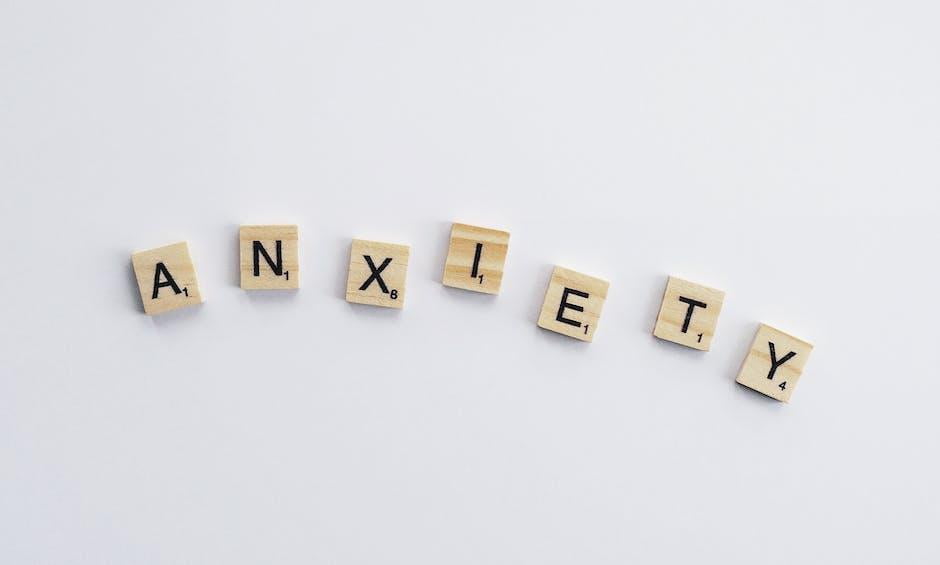Art serves as a powerful tool for mental health advocacy, offering a unique medium for expression, healing, and connection. This blog post delves into the multifaceted role of art in mental health, exploring its therapeutic practices, community-building potential, and economic benefits. Stick around to discover how art can be a catalyst for change, fostering understanding and empathy towards mental health issues.
Key Takeaways
- Art provides a therapeutic outlet for self-expression and emotional release.
- Community art projects can reduce feelings of isolation and foster connections.
- Art therapy is recognized and incorporated in professional mental health settings.
- Art programs in mental health care can be cost-effective and reduce overall healthcare costs.
- Resources and support are available for individuals and professionals interested in art for mental health advocacy.
Introduction to Art as a Tool for Mental Health Advocacy
Definition of art in the context of mental health
Art, in the context of mental health, is a creative process that allows individuals to express and explore their emotions, thoughts, and experiences. It serves as a non-verbal communication channel, enabling people to convey feelings that may be difficult to articulate through words.
Overview of the benefits of art for mental health
Art has numerous benefits for mental health. It can help individuals manage stress, improve self-esteem, and enhance self-awareness. Moreover, it can provide a sense of accomplishment, promote relaxation, and foster a positive mood.

Therapeutic Practices in Art
Different forms of art used in therapy
Art therapy encompasses various forms of art, each offering unique therapeutic benefits:
Painting and drawing
Painting and drawing allow individuals to visually represent their emotions and experiences, facilitating self-expression and emotional release.
Writing and poetry
Writing and poetry can help individuals articulate their thoughts and feelings, promoting self-understanding and emotional healing. You can learn more about this in our post on integrating art therapy into self-care practices.
Music and dance
Music and dance can be therapeutic, providing a rhythmic and physical outlet for emotional expression.
How these practices facilitate self-expression and emotional release
These art forms enable individuals to express their emotions and experiences in a safe and supportive environment. They can help individuals process traumatic events, manage stress, and improve their overall mental well-being.

Art as a Medium for Exploration and Expression
Exploring feelings and confronting fears through art
Art allows individuals to explore their feelings and confront their fears in a non-threatening way. It can serve as a mirror, reflecting an individual’s inner world and facilitating self-discovery and personal growth.
Articulating personal experiences in a supportive environment
Art provides a platform for individuals to articulate their personal experiences in a supportive environment. This can foster empathy, understanding, and acceptance, promoting mental health awareness and reducing stigma.
Case studies of effective art therapy interventions
There are numerous case studies demonstrating the effectiveness of art therapy interventions. For instance, art therapy has been used to help individuals with depression, anxiety, and post-traumatic stress disorder.

Building Community and Reducing Isolation through Art
Art initiatives that bring people together
Art initiatives can bring people together, fostering a sense of community and belonging. These initiatives can range from community art projects to art therapy groups, providing opportunities for social interaction and mutual support.
The role of community art projects in fostering connections
Community art projects can foster connections among individuals, promoting mutual understanding and empathy. They can also provide a platform for individuals to share their experiences and perspectives, fostering mental health awareness and advocacy.
Impact on reducing feelings of isolation among participants
Participation in community art projects can reduce feelings of isolation among participants. It can provide a sense of belonging and community, promoting mental well-being and resilience.

Integration of Art in Professional Therapeutic Settings
Recognition of art therapy in mental health professions
Art therapy is increasingly recognized in mental health professions. It is used in various settings, including hospitals, mental health clinics, and community centers, to support individuals with mental health issues. You can learn more about this in our post on seeking professional help for mental health.
Examples of organizations incorporating art into therapy
Hospitals and mental health clinics
Many hospitals and mental health clinics incorporate art into their therapeutic practices. This can range from individual art therapy sessions to group art therapy programs.
Community centers and non-profits
Community centers and non-profits also incorporate art into their programs, providing accessible and affordable art therapy services to the community.
Benefits observed from integrating art in these settings
Integrating art in these settings can provide numerous benefits. It can enhance therapeutic outcomes, improve patient satisfaction, and promote mental health awareness and advocacy.

Economic Benefits of Art in Mental Health
Cost-effectiveness of art programs in mental health care
Art programs in mental health care can be cost-effective. They can reduce the need for more expensive treatments, such as medication and hospitalization, and improve overall health outcomes.
Impact on reducing overall healthcare costs
By improving mental health outcomes, art programs can reduce overall healthcare costs. They can decrease the need for emergency care, reduce hospital readmissions, and improve quality of life.
Supporting evidence from health economics research
Health economics research supports the cost-effectiveness of art programs in mental health care. For instance, a study found that art therapy can reduce symptoms of trauma and depression, leading to cost savings in mental health care.
Resources and Support for Art in Mental Health Advocacy
Overview of the MARCH Network
The MARCH Network is a UK-based research network focused on the role of social, cultural, and community assets in mental health. It provides resources and support for individuals and professionals interested in art for mental health advocacy.
Other resources available for individuals and professionals
There are numerous other resources available for individuals and professionals. These include online resources, books, and training programs on art therapy and mental health advocacy. You can learn more about this in our post on different approaches to helping individuals with mental health issues.
How to access and utilize these resources for advocacy and therapy
These resources can be accessed online or through local libraries and community centers. They can be utilized for advocacy and therapy, providing guidance and support for individuals and professionals interested in art for mental health advocacy.

Conclusion
Summary of the importance of art in mental health advocacy
Art plays a crucial role in mental health advocacy. It provides a therapeutic outlet for self-expression and emotional release, fosters community and connection, and offers economic benefits in mental health care.
Encouragement to engage with art for personal and community well-being
Engaging with art can enhance personal and community well-being. Whether it’s painting a picture, writing a poem, or participating in a community art project, art can be a powerful tool for mental health advocacy.
Future perspectives on the role of art in mental health initiatives
As we look to the future, the role of art in mental health initiatives is likely to grow. With increasing recognition of its therapeutic benefits and cost-effectiveness, art is poised to play an even greater role in promoting mental health awareness and advocacy. So, why not pick up a paintbrush, pen, or instrument and start your own journey of self-expression and healing? (source: Voices of Youth)
Unlocking Wellbeing: How Art Advocates for Mental Health – Your FAQ Guide
What is the role of art in mental health advocacy?
Art plays a pivotal role in mental health advocacy by providing a universal language that transcends verbal communication, allowing individuals to express feelings and experiences that might be difficult to articulate with words. It serves as a therapeutic tool, helping people explore their emotions, reduce stress, and improve self-esteem. Additionally, art can raise awareness and foster a deeper understanding of mental health issues within the community, challenging stigma and encouraging empathy and support.
How can creating art benefit my mental health?
Creating art can significantly benefit your mental health by serving as a form of self-expression and emotional release. Engaging in artistic activities like painting, drawing, or sculpting can help reduce anxiety, depression, and stress. It encourages mindfulness and can be a meditative practice, allowing you to focus on the present moment and detach from daily worries. Moreover, the sense of accomplishment from creating something can boost your self-esteem and provide a positive outlet for expressing complex emotions.
Can art therapy really help in treating mental health issues?
Yes, art therapy is a recognized form of psychotherapy that uses the process of creating art to improve mental health and well-being. Certified art therapists guide individuals in using art to explore emotions, resolve psychological conflicts, reduce anxiety, and increase self-awareness. It’s particularly beneficial for people who find it hard to express their feelings verbally. Art therapy can support the treatment of various mental health conditions, including depression, anxiety, PTSD, and more.
Do I need to be good at art to benefit from it for mental health?
Absolutely not. The therapeutic benefits of art come from the process of creation and expression, not the final product. Engaging in art for mental health is about exploring your feelings and experiences through creativity, without judgment or expectation. It’s an opportunity to express yourself freely and find comfort in the act of making, regardless of skill level or artistic talent.
How can I start using art for my mental health?
Starting to use art for your mental health can be as simple as picking up a pencil and paper and letting your thoughts and emotions guide your hand. You can experiment with different mediums, such as painting, drawing, collage, or digital art, to find what feels most expressive and therapeutic for you. Setting aside regular time for artistic activities, attending workshops, or joining community art classes can also help. Remember, the focus should be on the process and how it makes you feel, rather than the outcome.
What are some examples of art activities that can help improve mental health?
There are many art activities that can help improve mental health, including drawing, painting, sculpting with clay, collage making, photography, and digital art creation. Mindful coloring and art journaling are also popular practices that combine the therapeutic benefits of art with reflection and mindfulness. These activities can help reduce stress, improve mood, and provide a sense of accomplishment and self-expression.
How is art used in community mental health advocacy?
Art is used in community mental health advocacy to raise awareness, educate the public, and combat stigma associated with mental health conditions. Community art projects, exhibitions, and workshops can bring people together to share experiences and support each other, fostering a sense of belonging and community. Public art installations and performances can also serve as powerful tools for sparking conversations about mental health, promoting understanding, and encouraging people to seek help.
Can viewing art impact mental health as well?
Yes, viewing art can have a positive impact on mental health. Engaging with art can evoke emotions, stimulate thought, and provide comfort. It can offer a sense of connection to others, reduce feelings of isolation, and inspire hope. Visiting art galleries, museums, or engaging with art online can provide therapeutic benefits, offering an escape, enhancing mood, and contributing to overall well-being.



